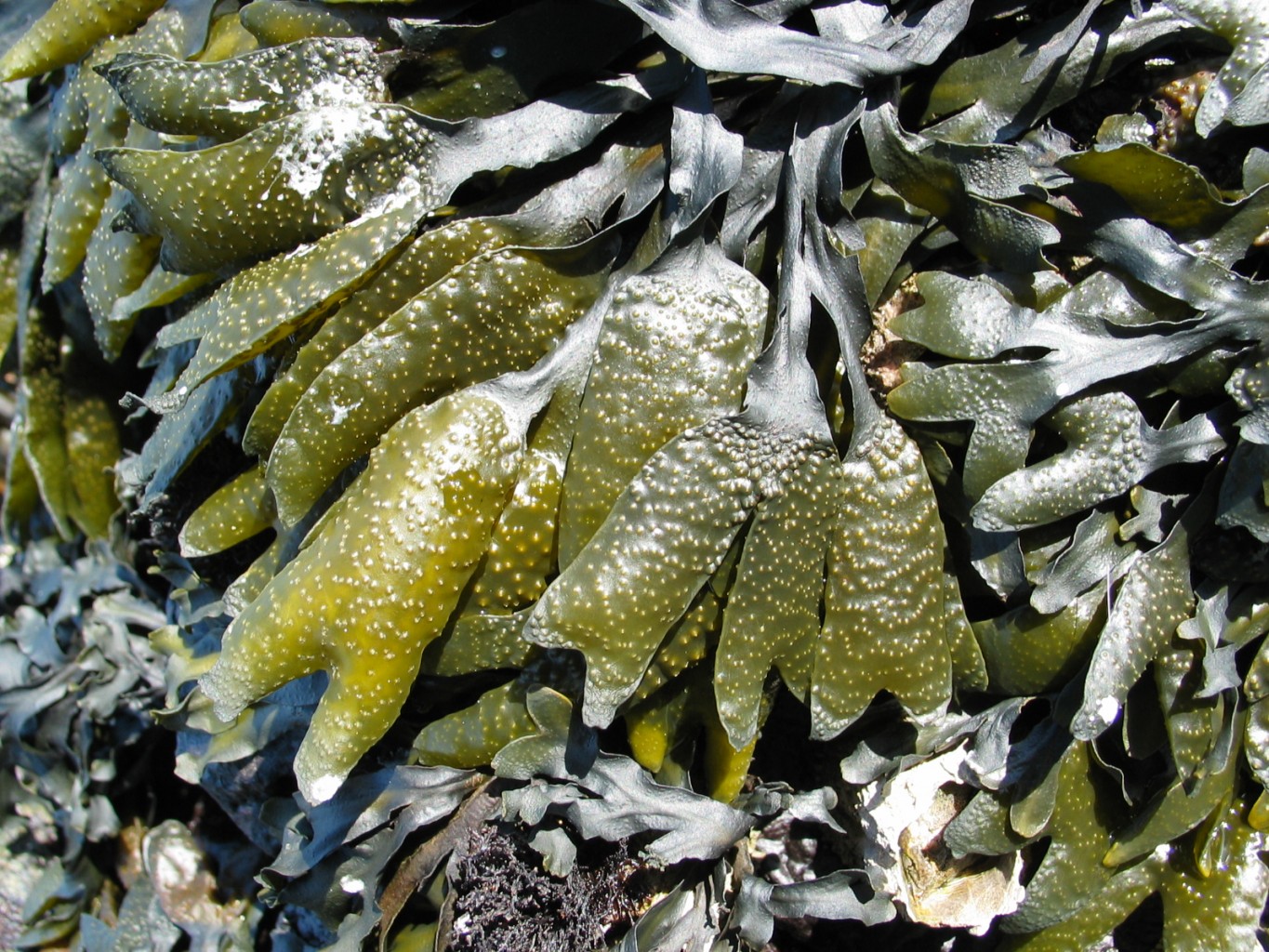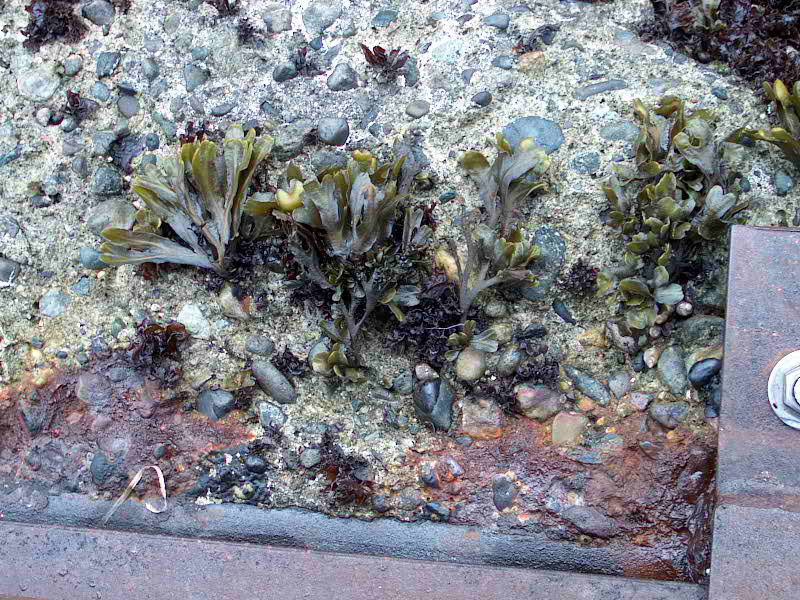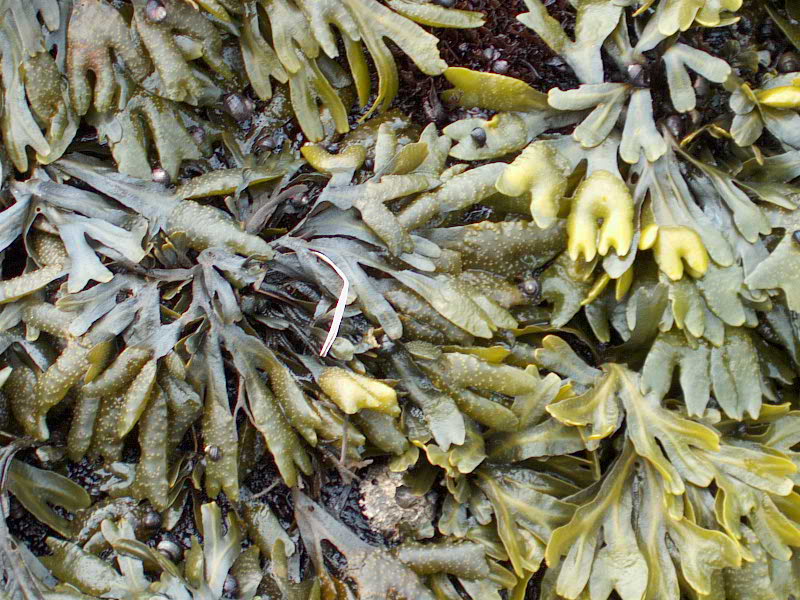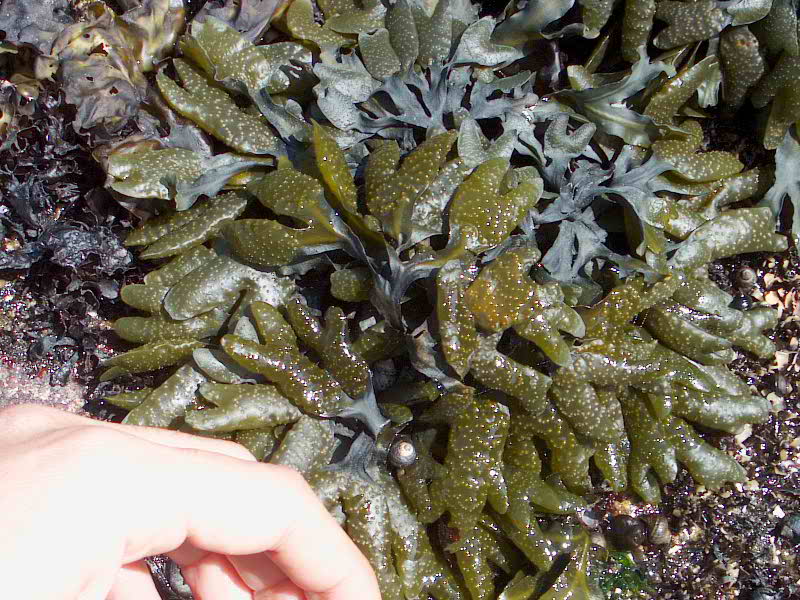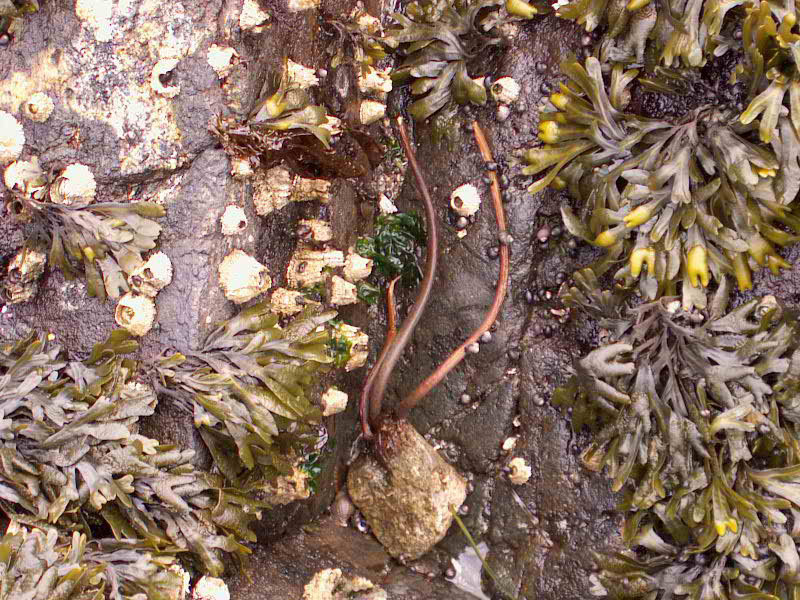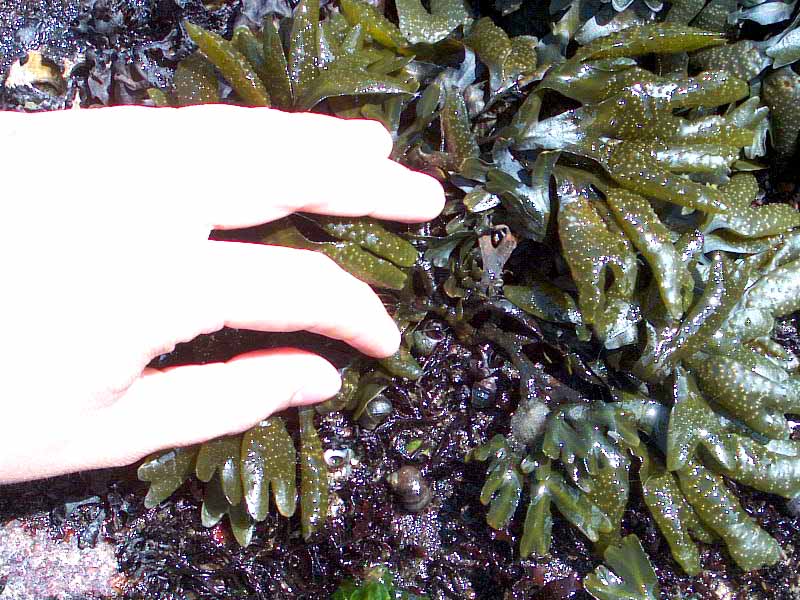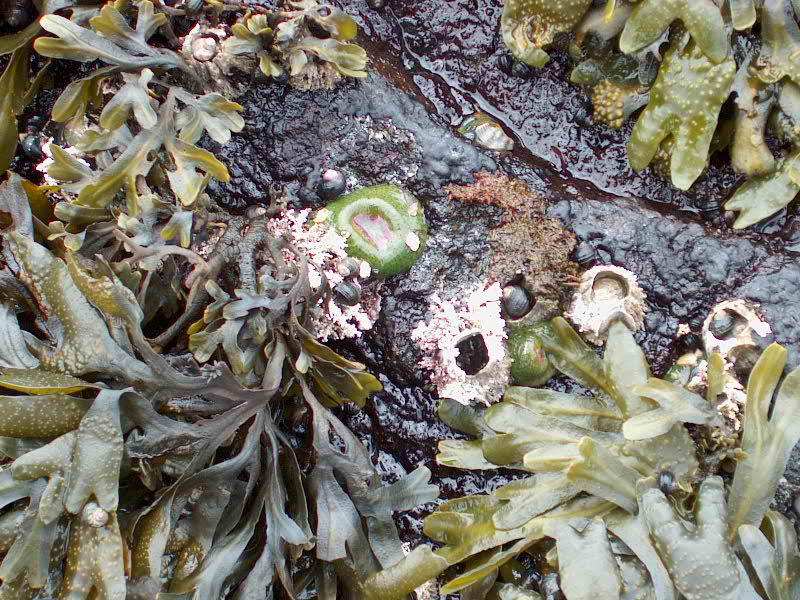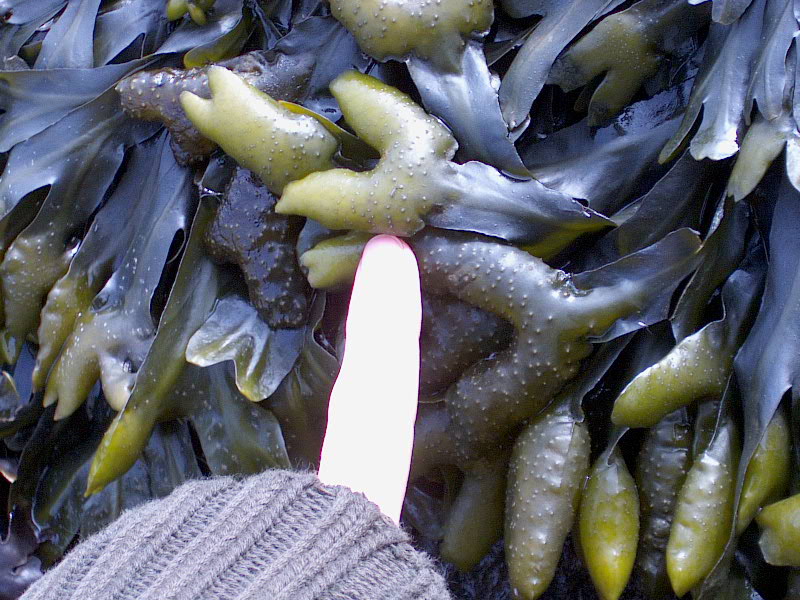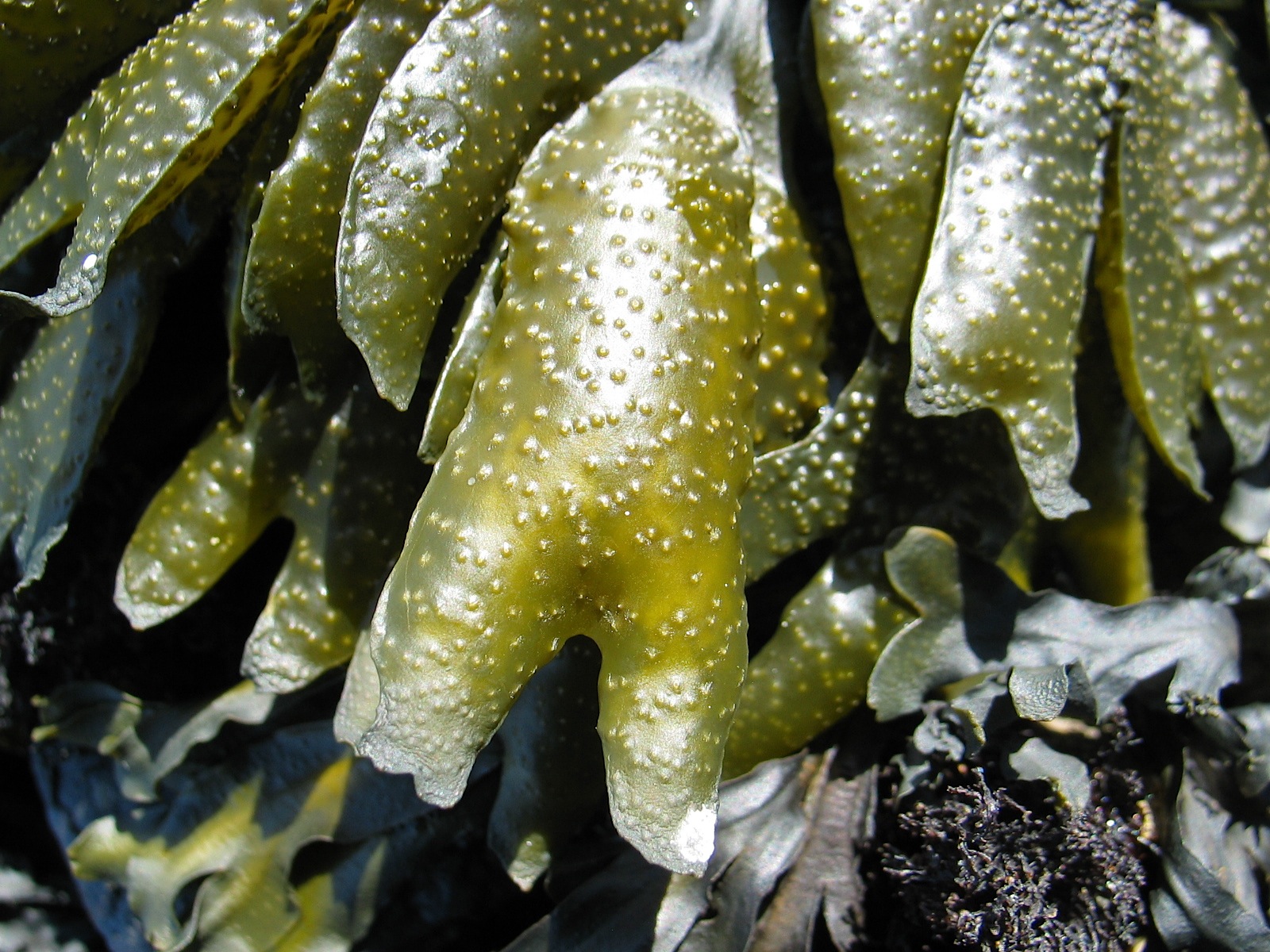This image shows the reproductive receptacles which are swollen areas at the tips of fronds that have many flask-shaped cavities called conceptacles. These house the male and female reproductive structures known as antheridia (borne on antheridiophores) and oogonia (containing 8 eggs). The eggs and sperm are liberated onto the surface of the receptacles and a pheromone (sex-attracting substance) is released by the eggs that attracts the sperm. Fertilization results in a zygote that forms a new Fucus adult.
- Fucus also grows on the concrete base of the boat carriage rails. Note life- inhibiting effects of iron leaching from the rails.
- You can see Littorine snails which typical use the fronds for shelter and maintaining moisture.
- Fucus shares this intertidal habitat with barnacles.
- The ends of the fronds contain a jelly-like substance which allows Fucus to survive even in arctic shores due to its anti-freeze properties.
- Here an intertidal anemone takes advantage of the shade and moisture retention of the Fucus fronds
- Photos by Ryan Murphy
Historically physicians used this seaweed for goiter (swelling of the tissue or cells of the thyroid) and for obesity. Published commentary by a turn of the century physician (Dr. J. Herbert Knapp) indicated that he had found this plant to be a specific remedy for both exophthalmic and uncomplicated goiter. Earle Claxton referred to medicinal uses by the First Nations in this video.
Description: Fucus gardneri is attached by a small, strongly attached disc which gives rise to a short stipe.
Distribution: This species is common on the mid inter-tidal rocks of all the islands at Race Rocks.
Domain: Eukarya
Kingdom: Protoctista
Division: Chromophycota
Class: Phaeophyceae
Order: Fucales
Family :Fucaceae
Genus :Fucus
Species: gardneri
Common Name: Rock Weed
Other Members of the Brown Algae or Phaeophyta at Race Rocks.
and Image File |
 The Race Rocks taxonomy is a collaborative venture originally started with the Biology and Environmental Systems students of Lester Pearson College UWC. It now also has contributions added by Faculty, Staff, Volunteers and Observers on the remote control webcams. The Race Rocks taxonomy is a collaborative venture originally started with the Biology and Environmental Systems students of Lester Pearson College UWC. It now also has contributions added by Faculty, Staff, Volunteers and Observers on the remote control webcams. |

